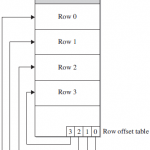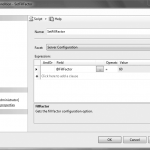During the installation of the Database Engine, the following system databases are generated:mastermodeltempdbmsdbNote - There is another, “hidden” system database, called the resource database, which is used to store system objects, such as … [Read more...] about System Databases – master, model, tempdb, msdb
System Environment of the Database Engine
Storage architecture of the Database Engine
The storage architecture of the Database Engine contains several units for storing database objects:PageExtentFileFilegroupThe main unit of data storage is the page. The size of a page is always 8KB. Each page has a 96-byte header used to … [Read more...] about Storage architecture of the Database Engine
Types of Data Pages / Parallel Processing of Tasks
Data pages are used to store data of a table. There are two types of data pages, each of which is used to store data in a different format:In-row data pagesRow-overflow data pagesIn-Row Data PagesThere is nothing special to say about … [Read more...] about Types of Data Pages / Parallel Processing of Tasks
Utilities – bcp, sqlcmd, sqlservr
Utilities are components that provide different features such as data reliability, data definition, and statistics maintenance functions. The following utilities are described next:bcpsqlcmdsqlservrFollowing the description of these … [Read more...] about Utilities – bcp, sqlcmd, sqlservr
DBCC Command
The Transact-SQL language supports the DBCC (Database Console Commands) statement that act as a command for the Database Engine. Depending on the options used with DBCC, the DBCC commands can be divided into the following … [Read more...] about DBCC Command
Policy-Based Management
The Database Engine supports Policy-Based Management, a system for managing one or more server instances, databases, or other database objects. Before you learn how this framework works, though, you need to understand some key terms and concepts of … [Read more...] about Policy-Based Management



